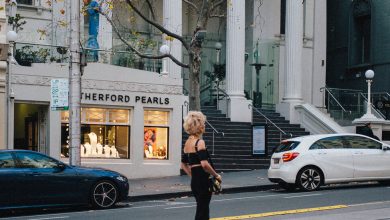Secret Charms and 7th Sons: ‘The Cure’ Is Alive and Well in Ireland

PULLOUGH, Ireland — For two hours on Sunday mornings, they come to the pub with all that ails them. A small boy with a rash. A farmer with ringworm. A man with a throat infection.
They are here to see Joe Gallagher, who owns this canary yellow pub, nestled alongside a canal in the tiny Irish village of Pullough in County Offaly.
They believe that as the seventh son of his family, he holds a cure.
“I’m at this all my life,” said Mr. Gallagher, 75, as he took a deep drag on his cigarette. As he explained how he does the cure — by laying his hands on the affected area, doing the sign of the cross and reciting some prayers — he breathed out ribbons of smoke that swirled around his face.
Mr. Gallagher is just one of hundreds of men and women across Ireland who are healers, or have “the cure,” an approach to health care that interweaves home remedies with mysticism, superstition, religion and a sprinkle of magic.
It’s part of a belief in folk medicine, curing charms and faith healers that is still a way of life for many in Ireland, if a fading one.
Some who are believed to have the cure are seventh sons, like Mr. Gallagher, a birth order long thought to bestow special powers.
Others are keepers of family customs that range from rituals, prayers and charms to herbal tinctures, offered up as treatments for everything from burns and sprains to rashes and coughs.
Since his childhood, people have sought out Mr. Gallagher. “I think you must have the belief,” he said, acknowledging that the process doesn’t always work. “I wouldn’t say that I can do miracles.”
For Mr. Gallagher, a former monk who said his religious order had been accepting of the cure, the practice is a deeply religious one.
“You have to put your heart and soul into it, and you’re asking God to help you with this thing,” he said.
For others, the cures depend less on a deep Christian faith and more on secrets handed down through centuries of oral tradition.
Bart Gibbons, 57, who owns a grocery store in the village of Drumshanbo in County Leitrim, has a cure for warts that was passed down from his father and his father’s father before him.
It involves taking a bundle of rushes and saying a combination of prayers as they are held over the affected area. Then, he buries the reed-like plants. The belief is that when they decay, the warts are gone.
Mr. Gibbons didn’t plan to carry on with the treatment after his father’s death, but then a woman showed up at his door asking for the cure to clear her warts before her wedding day. He said he would try. It worked, he said, and people have been coming ever since, some from hundreds of miles away.
He said it would be wrong to receive payment for a cure, and the idea that payment is taboo is something experts say is ingrained in the tradition. Mr. Gibbons described being a “vessel” of his cure. “I’m not holy,” he said. “And I don’t pretend to be.”
In Mr. Gibbons’s view, the cure is about belief rather than religion. “If people believe strongly enough that this has happened, I think your body makes it happen,” he said.
Attributing positive outcomes of the cure to something like a placebo effect makes sense to Ronald Moore, an associate professor of public health at University College Dublin who has spent years researching folk cures and who emphasized there is little scientific evidence for the efficacy of these practices.
But that doesn’t mean the medical community completely dismisses potential benefits, with some doctors known to send their patients for the cure, often for skin issues or other minor troubles.
“Modern practices on the one hand pooh pooh this, as scandalous and outrageous and quackery,” Dr. Moore said. “But in fact, and in reality, they utilize it.”
While many cures have been infused with a religious element in a country with an overwhelming Catholic majority, the tradition — variations of which still exist in many cultures across the world — is ancient.
“Cures and charms go way beyond the established church, it predates Christianity,” Dr. Moore said. “It is essentially a pagan system.”
But there are cases of priests who have cures and others who send people for them, though the Catholic Church is “more than ambivalent to this,”Dr. Moore said.
The cures and charms themselves are often shrouded in secrecy, but the community knowledge of who has the cure is widely known, and in modern Ireland, a global technology hub, it’s not hard to find someone when you need someone. Even in Dublin, a cure is never more than a phone call or text away.
“It’s the whole community-based element of folk medicine that is so important,” saidBairbre Ní Fhloinn, an associate professor of Irish folklore at University College Dublin.
“The whole interconnectedness of our physical health and our mental health and our emotional health and our spiritual health — this is something that’s kind of built into so many folk medicinal cures,” Dr. Ní Fhloinn said, “which modern medicine again, for all its miracles, can miss out on.”
Most healers Dr. Ní Fhloinn has met see their cures as a system that runs alongside conventional medicine, not in opposition to it, and she said she knows of skeptics who have turned to the cure.
“That we don’t believe in miracles doesn’t mean we don’t hope for them,” she said.
Still, there have been instances of people preying on the vulnerability of the sick, charging steep prices for miracle cures.“Folk medicine can attract charlatans and chancers of all kinds,” Dr. Ní Fhloinn said.
Sometimes, there are multiple cures under one roof.
Patricia and Peter Quinn, who own a small farm in County Offaly, both have cures with their own rituals.
Mr. Quinn has a cure for warts, passed down from his father.
To treat shingles, Mrs. Quinn dips cotton in holy water and daubs it on the affected area while saying the prayer her grandmother taught her. After the third treatment, she throws the cotton and the water into a fire.
On a recent morning, a woman Mrs. Quinn had treated for shingles stopped by with a plate of cupcakes. “Everybody appreciates you doing it,” she said.
As Irish families have gotten smaller, seventh sons have become much rarer. But Andrew Keane, 37, who lives in County Mayo, is one. When he was a baby, his parents were told by another seventh son that theirs had the cure for ringworm, and he showed the boy the ritual. His mother still has vivid memories of Andrew as a young boy reaching out tiny hands and saying the curing prayers.
In their farming community, where ringworm is common in cattle and easily passes to people, it was a popular cure. Now, with two children of his own, doing the cure is just part of his everyday routine, and he has never really second-guessed it.
“I’d feel bad if I stopped,” said Mr. Keane, who treats people in the evenings after work as a builder. “I feel like I was given this gift. And why would I not use it?”
Mr. Keane also treats animals. On this particular night, he went to visit neighbors, Áine McLoughlin, 54, and her husband, Chris McLoughlin, 55, whose two dogs had ringworm.
“I thought it was worth a shot because the dogs weren’t improving,” Mr. McLoughlin said, adding they had already visited the vet.
Mr. Keane stroked the floor three times, made the sign of the cross and placed his hands on the Highland Westies’ backs, while saying the Hail Mary.
As she watched him perform, Mrs. McLoughlin said she had grown up with beliefs in cures. But she worries the rituals may be lost in the next generation.
“That’s something,” Mrs. McLoughlin said. “you will never be able to Google.”





